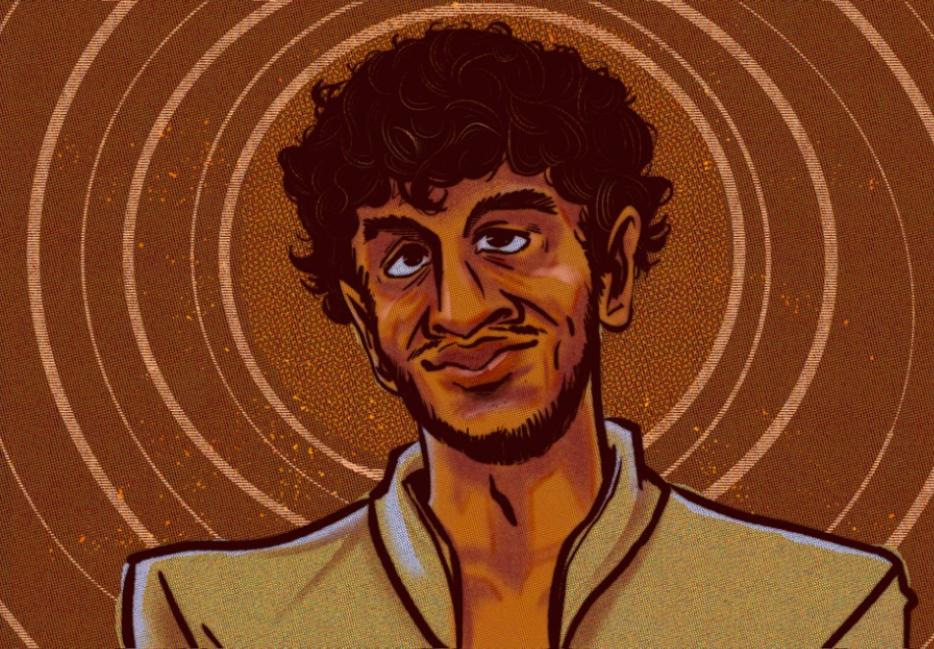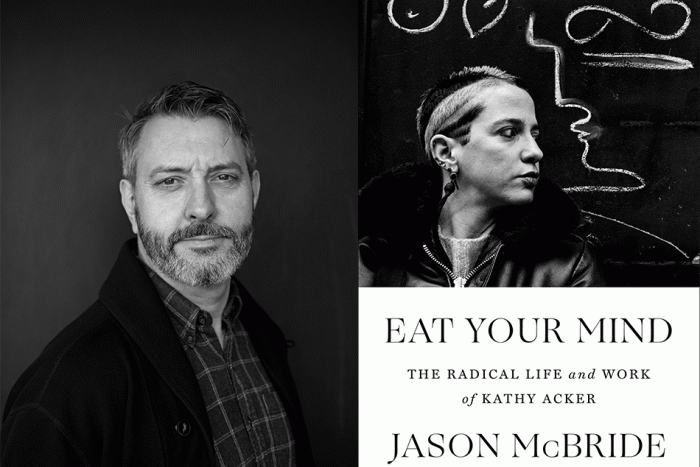Welcome to Wayward Watching, a column on the seen and unseen in film.
I was a fool when I first saw Breathless inside a college classroom in Bombay. At nineteen, I tried to outdo the impudence of Godard’s cop-killing protagonist by promptly dismissing the film as worthless. After the screening I stood up and wondered aloud what was new about the premise of a couple on the run. Indeed, weren’t these childish fantasies of escape, these raffish homages to crime flicks, already passé when the film was made five decades ago? I remember our instructor for that class, a boyishly handsome film school alumnus in his mid-twenties, used to be fussy about attendance. The previous week when he had screened Metropolis—or was it The Cabinet of Dr. Caligari?—he probably noticed me slipping out of the room within minutes. After that screening of Breathless, he shot me a withering look and resumed his lecture without acknowledging my comment. In my memory his hair flops over his eyes as he turns his face away, a bit like Jean-Paul Belmondo’s close-ups in the film. At the time his gesture felt like a deliberate slight. Now I realize he was sparing me some embarrassment by not asking me to elaborate.
Years later, when I encountered another Godard film, in another country, I understood that his rehashed fantasies of escape were in fact circuitous pledges of commitment. Bruno Forestier, the antihero of Le Petit Soldat, is also on the run: from the French government for avoiding military service during the Algerian War, from the leaders of a right-wing French paramilitary group in Switzerland who doubt his allegiance and recruit him to assassinate an FLN sympathizer, from two FLN agents in Geneva who kidnap Bruno and handcuff him to a shower railing in a bathroom. With Godard, the action often unfolds as a coda, something seemingly conceived halfway through a shot, but his films seldom feel like inert portraits. “The time for action has passed,” Bruno declares in the opening scene. “It’s time now for reflection.” To watch him quote Louis Aragon to his lover, or compare the evening sky in Geneva to a Paul Klee painting, or even stare down a driver during a car chase, is to witness the unravelling of a man who believes that freedom is all about avoiding pursuit, the cascade of niggling thoughts that keep him up at night.
In a 1971 essay, Satyajit Ray frankly summed up the experience of watching Godard’s early work: “A cinema of the head and not of the heart, and therefore a cinema of the minority.” Fifty years ago, who could have foreseen how big—and occasionally insufferable—the Godard-loving minority would become? It is impossible to think of the contemporary essay film without his capacious adventures in form: the primacy of editing; the jump cuts; the plotless medley of jokes, anecdotes, literary passages, reportage, video ads and interviews; the dissonance between voiceover and image that we now take for granted. In the 1950s, Godard famously wrote film criticism for the magazine Cahiers du Cinema, and hung out with fellow pundit and movie fiend François Truffaut at the Cinemathèque in Paris. After a long spell of self-apprenticeship through his twenties, Godard was willing to risk incoherence with his chaotic process and improvised technique. Will there ever be a filmmaker more adamant about emulating the literary canon, or treating scraps of footage as palimpsests? His characters directly address the camera midscene, seldom spill their backstories, but end up providing answers to a version of the Proust questionnaire. With every new project he seemed to amend his working definition of a movie, and often enlisted another director to articulate his ideas onscreen. The great Samuel Fuller appears as himself in Pierrot le Fou and tells the eponymous hero at a dinner party that a film is “like a battleground.” Midway through an impromptu photo session in Le Petit Soldat, Bruno can’t help mansplaining Film Studies 101 to his girlfriend: “Photography is truth. Cinema is truth twenty-four times a second.” Then there is Jean-Pierre Melville’s unforgettable cameo as an author in Breathless, his delusional desire to “become immortal and then die.”
Pierrot le Fou is, to my mind, the most intoxicating of his films, where his neurotic, slightly self-sabotaging ambition is perfectly balanced by a sense of stylized detachment. Pierrot and Marianne—again, a couple on the run—burn down a 1964 Peugeot together in the first thirty minutes, then steal a Ford Galaxie from a gas station only to abandon it in the middle of the sea. They escape to an off-Mediterranean village, where Pierrot spends all his time reading novels, writing in his journal, and cruising around the fields in a bucolic tractor. Marianne, played by Anna Karina, is the more elusive figure in the relationship: one moment she is bringing Pierrot books to read from the local library, the next moment cajoling him to move back to Paris. “We’ve played Jules Verne long enough,” she tells him. “Let’s go back to our gangster movie.” The film lapses into a rushed dénouement, a cocktail of guns, car crashes and deaths that Godard unveils almost as a gag. As in Breathless, the scenes aren’t meant to advance an overarching plot. Much like Bruno in Le Petit Soldat, Pierrot ends up being waterboarded. And yet you’re mesmerized by a couple falling in and out of love, as though you’ve never seen that happen before in a film. Despite the whimsical interludes, and the self-conscious reminders that the audience is watching something fictitious, there are images and moments that seem borrowed straight from the book of Godard’s life. “What upsets me is that life is different from novels,” Marianne confesses to Pierrot at one point. “I wish they were the same—clear, logical, organized.”
Much has been written about the Godard-Karina marriage—they started dating shortly after Karina’s appearance in Le Petit Soldat, and divorced before shooting Pierrot le Fou—and how the relationship neatly coincided with a phase of his prolific career. To me, the more revealing dynamic was between Godard and his amigo Truffaut, their prior intimacy (Truffaut wrote the treatment for Breathless and also helped persuade Georges de Beauregard to produce the movie) eclipsed by their spectacular falling-out in a sharp exchange of letters, weeks after the release of Truffaut’s Day for Night in 1976. Godard called the film “dishonest” and his friend “a liar.” Truffaut responded in kind: ”You have never succeeded in loving anyone or in helping anyone, other than by shoving a few banknotes at them . . . Between your interest in the masses and your own narcissism, there’s no room for anything or anyone else.” The two men never patched things up and spared no subsequent occasion to deride each other’s movies.
My die was inevitably cast in this auteur war when our instructor in that film class screened The 400 Blows one week after Breathless. I squared Godard’s unorthodoxy with Truffaut’s autobiographical leanings, but deemed the former to be deficient. Truffaut seemed the truer modernist, chasing after the real thing—the pure story, the pure film—while Godard appeared happy to be a commentator, too preoccupied with the artificiality of the medium. I noticed that Godard’s composite style rendered every conversation ironic. His male characters are always half-joking, or speaking in long paragraphs to their lovers. The women, even with their backs turned to the camera, can’t help but wittily spell out the subtext of a scene. Think of the dinner party scene in Pierrot le Fou, where our hero flits from room to room eavesdropping on conversations, and everyone—except for Sam Fuller—is spouting lines from TV commercials. Godard is making an original point, albeit in a ham-fisted way. Who in their right mind would disagree that capitalism has turned us all into consumer bots? When his characters talk about writers, or read aloud passages from novels, they are usually just outlining how Godard wished to be written about. In one scene, Pierrot talks about his ambition of writing a novel that explores “what lies in between people . . . Joyce gave it a try, but it should be possible to do better.” Sure enough, when the critic Pauline Kael reviewed Weekend in 1967, she likened Godard to James Joyce.
I had to fail as a filmmaker to appreciate the radicalism of Godard’s sensibility. It was one thing to write a quirky screenplay, as I did at twenty, quite another to shoot the simplest of scenes. Sometime after I first beheld a camera monitor on a shoot—and later, the rushes!—I grew to understand that the hardest part of breaking rules was mastering them after all. I remember watching Day for Night all those years ago, after wasting an evening trying to shoot a putatively easy scene: a man pacing alone on a deserted beach and disappearing, moments later, into the sea. Underneath the affairs and tensions of a movie crew somewhere in the south of France, Truffaut’s masterpiece seemed to be mirroring my struggle, the insanity of obsessing over every detail just to breathe life into a shot.
Recently I watched Day for Night again and was struck by its correspondences with Pierrot le Fou. When the director of the crew, played by Truffaut himself, assures his male lead that movies chug along smoothly “like trains in the night,” he is obviously arguing with the notion of a film as a battleground. Before kissing Pierrot for the first time, Marianne quips that she is “in love with a man who wants to drive off a cliff at sixty miles per hour.” And lo, in Day and Night, there is a staged sequence of a car rolling down a cliff that centres the stunt performer often intrinsic to such scenes. Midway through their idyll, Pierrot criticizes Marianne for being uninterested in ideas: “You only like feelings.” Godard would pretty much repeat this accusation in his angry letter to Truffaut. Once upon a time, the two friends had bonded over a shared determination to break every rule, then they were consumed by malice. When Truffaut died in 1984, Godard’s wife, the filmmaker Anne-Marie Miéville, told him, “Now that he’s dead, no one will protect you.” Godard took too long to grasp that their story had a familiar shape. Years later, in an introduction to a collection of Truffaut’s letters, he wrote, “If we tore each other apart, little by little, it was for fear of being the first to be eaten alive.” The two men were, in their own inimitable way, a couple on the run.






